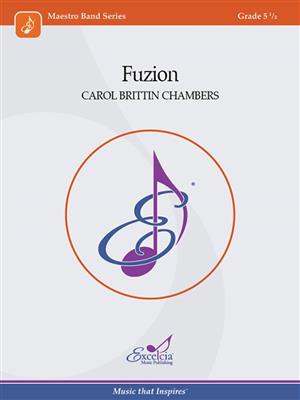Results
-
 £139.99
£139.99Spirit of Independence - Jan Van der Roost
'Spirit of Independence' was commissioned by the Koninklijke Fanfare 'Onafhankelijkheid' ('Independence') from Wiekevorst (Belgium) on the occasion of its 25th anniversary. The piece depicts an enthusiastic amateur music club, practicing and making music together in an attentive and companionable atmosphere. The conductor has the good habit of trying to improve the sound of the fanfare by means of practicing chorales and hymns. Jan Van der Roost has used these facts in the dynamic concert piece 'Spirit of Independence': a chorale-like middle section is surrounded by music bubbling full of energy.
Estimated dispatch 7-14 working days
-
£76.99
My Love
Nicky, Shane, Mark, Kian and Bryan together form the Irish boy-band Westlife. During the past few years they have taken the charts by storm with six number one hits in the UK. The ballad My Love was a smash hit across the whole of Europe and this special arrangement succeeds in keeping the feel of the original song.
Estimated dispatch 7-14 working days
-
£89.99
Andante - Georges Bizet
The composition of the suite Roma was a labor of love for Bizet as it took some eight years to complete, originally being intended as a symphony. This Andante, together with an Allegro, forms the first movement of the work. Wilvan der Beek has created a beautiful, satisfying band arrangement of this little-known masterpiece.
Estimated dispatch 7-14 working days
-
 £154.99
£154.99Evergreen Concerto - Kees Schoonenbeek
This fantastic new work is set to become a classic in the trumpet repertoire. Each of its three contrasting movements can be played alone as shorter pieces or together as a mini concerto. The second movement is particularly interesting in the fact it is a fantasy in theme and variations form, based on a Handel minuet. A must for all trumpet players of an intermediate to advanced level.
Estimated dispatch 7-14 working days
-
 £102.99
£102.99Albastum - Stijn Roels
Albastum is a proud, stately concert march written in classic A-B-A form. It opens with a festive fanfare in the brass section, followed by a lively, bright theme, symbolising the joy of playing music together at each weekly rehearsal. Following a melodious trio, a counter theme develops and the march comes to an exciting close with a reprise of the original theme.
Estimated dispatch 7-14 working days
-
 £102.99
£102.99Little Suite - László Dubrovay
This work was written in 2005, prompted by the composer's determination that young members of junior, music school and conservatoire wind ensembles should not be limited to transcriptions for lack of original compositions, especially contemporary ones. The new devices used in the Little Suite are suitable for student players to try out. Indeed, they enjoy them - for instance, purring or whistling into the instrument. Each of the three-or-four-minute movements of this four-movement work can also be performed separately. The titles of the movements are the following: 1. In cheerful mood, 2. Song, 3. Joke, 4. March. This music in modern idiom, full of interesting new effects, offers young players an opportunity for enjoyable music-making together, and at the same time prepares them for playing more difficult contemporary works.
Estimated dispatch 7-14 working days
-
 £115.50
£115.50Fuzion - Carol Brittin Chambers
This clever and challenging work by composer Carol Brittin Chambers fuses together cherished childhood melodies from her time studying Bach and mixes it with her own personal twist. Rhythmically diverse and harmonically pleasing, Fuzion is a tour de force!
Estimated dispatch 7-14 working days
-
 £93.50
£93.50Rank and File - Matthew R. Putnam
A modern-day March King, Matthew R. Putnam, knows how to write them! This new march in 6/8 time is easy to put together, but sounds just as grand and full as any Fillmore or Susa. A great introduction to the quick marches of yore!
Estimated dispatch 7-14 working days
-
 £65.00
£65.00The TV Detectives - Nigel Hess
The TV Detectives brings together five of Nigel Hess's best-known television themes, all originally written for small-screen sleuths in whodunnits that have been enjoyed by TV audiences worldwide. The themes standalone asimaginitive and challenging pieces that will stretch wind ensembles and delight audiences. This is a continuous suite arranged for wind band.
Estimated dispatch 7-14 working days
-
 £79.50
£79.50American Visions - Travis J. Weller
Soaring themes and dazzling fanfares collide in this exuberant work that weaves original themes with America (). A multitude of harmonies, melodies and meter changes are seemlessly woven together to create a piece that works equally well as a concert opener / closer or a patriotic selection. Absolutely stellar!
Estimated dispatch 7-14 working days
